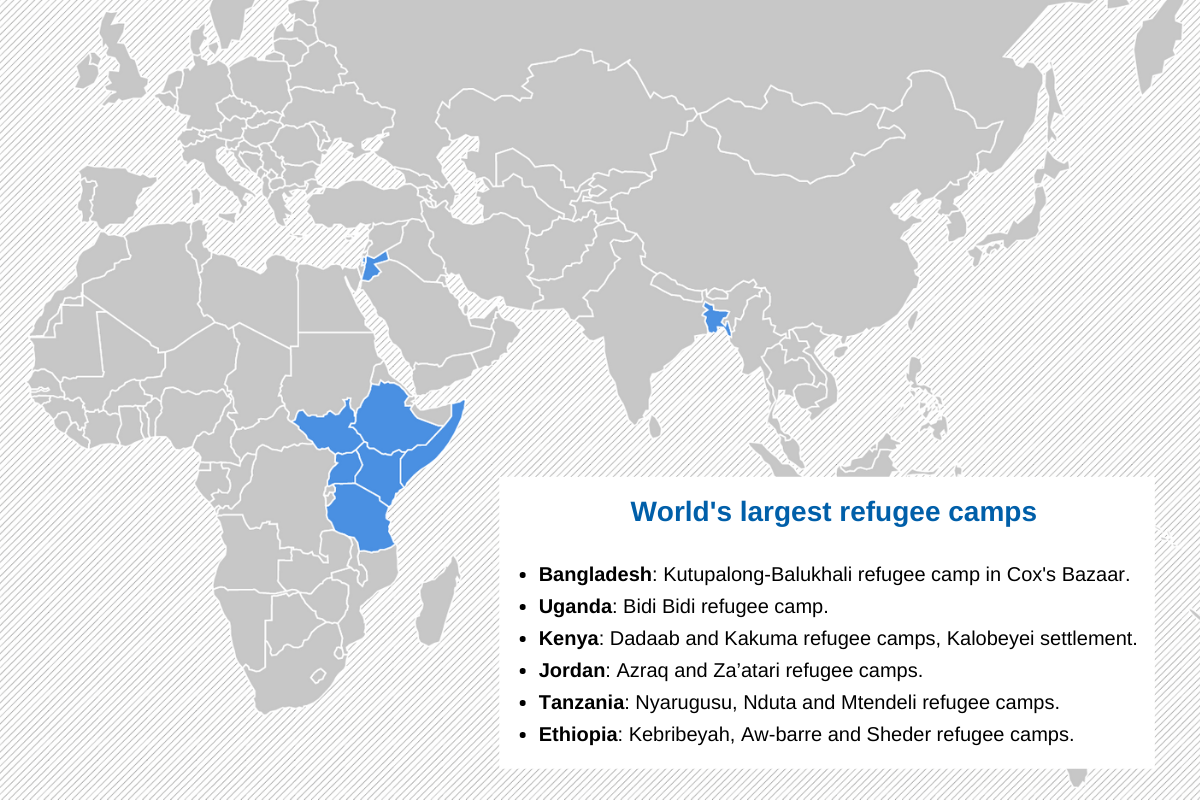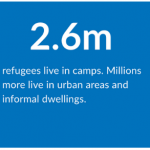What is a Refugee Camp?
Refugee camps are temporary facilities built to provide immediate protection and assistance to people who have been forced to flee due to conflict, violence or persecution. While camps are not intended to provide permanent sustainable solutions, they offer a safe haven for refugees where they receive medical treatment, food, shelter, and other basic services during emergencies.
What services are provided at a refugee camp?
Planning and Design:
UNHCR, the UN Refugee Agency, mobilizes an emergency operation response team to assess the situation within the first 72 hours of a refugee crisis. The team deployed is introduced to government authorities and local partners to form a rapid assessment of the situation and the overall wellbeing of the fleeing population. At this point, one of UNHCR’s key roles is to start the complex process of negotiating with local authorities the location of a humanitarian space that guarantees the security of the people that have fled. This space is often a camp.
A safe humanitarian space includes:
- Security: It should have a safe distance from the border, but no more than a day’s walk where possible.
- Geography: It should have easy access to water supplies, safe geographical features (e.g. stable ground soil, shaded areas) and waste management capabilities to ensure healthy and comfortable conditions. The layout of the site should also allow each refugee at least 480 sq. ft. to provide dignity and mitigate the risk of health crises.
- Accessibility: humanitarian spaces require major logistics and supplies. It, therefore, needs to be accessible for big vehicles. Depending on the urgency of the situation, it may also require an air strip for lifesaving supplies.
A well-designed camp should protect the environment and help prevent fires and outbreak of disease. Food, water points and latrines should be properly lit and close enough to homes to protect women and girls against the threat of sex and gender-based violence (SGBV).
Other Services:
Do all refugees live in refugee camps?
No. In fact, approximately 60 percent of the refugee population live in cities instead of refugee camps, a proportion that has been stable since 2014. Turkey currently hosts the largest urban refugee population, with the vast majority living in urban or peri-urban areas.
Where are refugee camps located?
There are refugee camps all over the world. Many of these camps were built quickly to serve the immediate needs of those forced to flee, but have grown to host hundreds of thousands of displaced people.
These are some of the largest refugee camps in the world:
Article is compiled by – Mr. Vedansh Anand
Legal Researcher
Source Taken – https://www.unrefugees.org/refugee-facts/camps/





